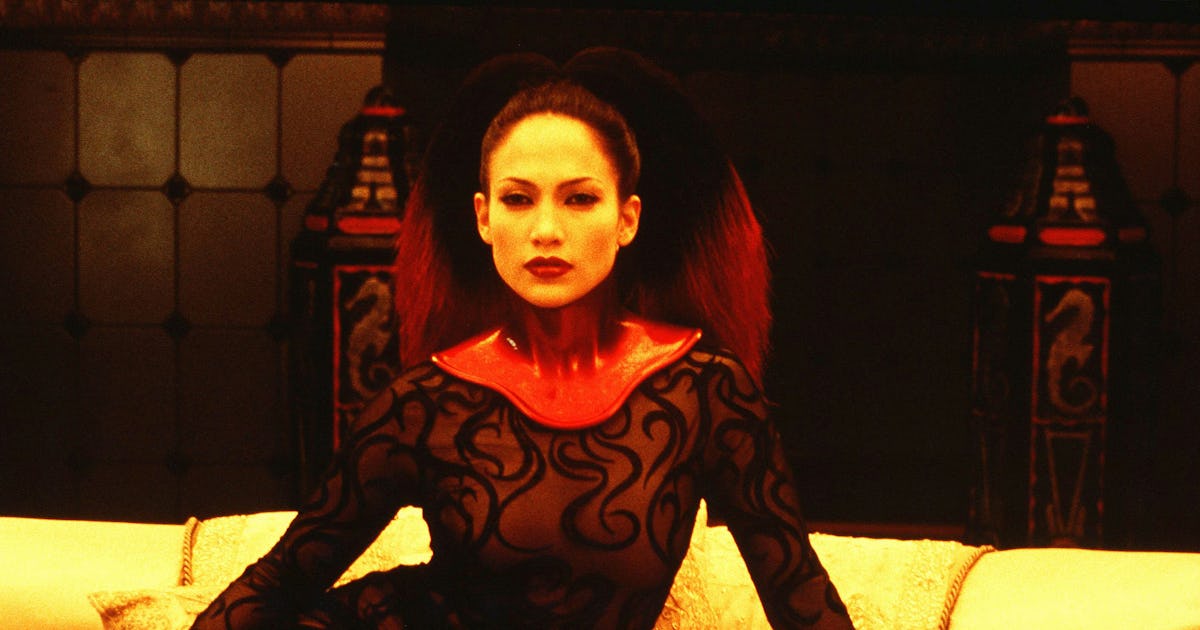The success of The Silence of the Lambs did not go unnoticed by 1990s Hollywood. Earning $250 million more than its budget at the box office and winning a historic array of Oscars, Jonathan Demme’s Hannibal Lecter adaptation ignited a hunger for sadistic killers and detectives versed in absurd, simplified psychology. Many of the attempts to recapture Lambs’ success were not quite realistic, but at least grounded in a non-fantastical reality, like Se7en, The Bone Collector, Primal Fear, Kiss the Girls, and the very aptly titled Copycat.
But as the decade wore on, more ambitious (and ludicrous) serial killer thrillers emerged to test the balance of heightened pulp and psychological edge central to Demme’s success. The same year as Se7en, Denzel Washington and Russell Crowe played cat and mouse respectively in the sci-fi thriller Virtuosity, where a detective hunts down a virtual reality program consisting of multiple serial killer personalities. Outside of Hollywood, Japanese genre maestro Kiyoshi Kurosawa drained the genre of its perverse pleasure with Cure, a thriller about an enigmatic amnesiac who triggers existential murders with hypnotic cues.
By the end of the ‘90s, it was clear that the “hunt a serial killer” genre had some life left in its bones, but the occasionally radical takes on the chilling Silence of the Lambs aesthetic begged the question: how elastic were the rules and boundaries of this subgenre? In 2000, we got the answer with The Cell, the film debut of Tarsem Singh.
In the film, an FBI hunt spearheaded by Agent Peter Novak (Vince Vaughn) for the depraved Carl Rudolph Stargher (Vincent D’Onofrio) is forced to use experimental technology to enter the killer’s comatosed mind to rescue his latest victim. This exposes Dr. Catherine Deane (Jennifer Lopez), the only person who has experience with the virtual reality tech, to Stargher’s unguarded masochistic impulses.
Watching The Cell — which earlier this year preempted its 25th anniversary with a limited edition 4K Blu-ray from Arrow Video — you get the sense that Tarsem is not tremendously interested in the procedural elements of Mark Protosevich’s screenplay. The first third of the film weaves snippets of Catherine’s work — a cutting-edge but so far frustrating process of healing troubled minds — with a breakneck pursuit of a nasty killer. Sporting a bowl cut that eerily anticipates Anton Chigurh, not to mention metal hooks down his back that one-up Francis Dolarhyde’s Manhunter tattoo, D’Onofrio plays Stargher as an entity consumed by anguish and paranoia. It’s like a whole movie’s worth of murder and investigation has happened before The Cell even begins.
As Tarsem says himself, the serial killer plot is a pretext for the imaginative, high art-inflected dream horror that rules Stargher’s unconscious mind. “That’s what got the film made. I have no interest in serial killers. I had all this visual stuff I wanted to get out, and I just had to find the right vehicle,” he said earlier this year.
The lush visuals of the second half of the film was its real selling point.
Lorey Sebastian/New Line/Kobal/Shutterstock
Tarsem filled his “blank slate” serial killer film with nightmare sequences that make direct reference to artists like Damien Hirst and Odd Nerdrum, but also (through their shared costume designer, Ekio Ishioka) 1992’s Bram Stoker’s Dracula. As Catherine navigates a series of distorted and physics-bending reinterpretations of Stargher’s lived experience — seeing a horse divided in many clinical segments in front of her, recognizing his victims reinterpreted as shocking, glamorous music-video-esque models, witnessing his childhood abuse from a claustrophobic closet hideout — we can also see parallels of the then-just-emerging Silent Hill video game series.
As Catherine starts to fall under the spell of the baroque, subjective dreamlogic of the virtual reality world, The Cell consolidates its maximalist, metaphysical power, articulating its twist on the serial killer genre. The rule of law, including every variant of psychological profiling and detective work, is only effective in an objective reality where a serial killer’s influence — as sadistic and genius as it may be — is limited to a single person in a world they are forced to navigate in an ordinary, inconspicuous fashion. By trapping us in the operatic, shifting confines of the subconscious, The Cell updates the “hunt for a killer” film by removing reality from the equation, which makes the shaky but navigable link between detective and killer suddenly volatile and dangerous.
What makes The Cell so significant is that it basically announces that there was nowhere else for the post-Silence of the Lambs trend chasers to go; Tarsem pushed the archetypes too far into fantasy to believably recover the same balance of ludicrous pulp and intense realism. What serial killer films did succeed in the 2000s erred closer to true crime — Memories of Murder, Monster, Zodiac — and pulp was relegated to multi-season TV with hit shows like Dexter.
A Hollywood genre fad running its course is nothing new, but it is rare for the last triumph of a movie trend to ecstatically explode how these films were supposed to look and feel, while still being an authentic, recognizable descendant of the film that inspired it. Twenty-five years after its eye-catching and stomach-turning glory was unleashed, The Cell’s winning absurdity and willing perversion of genre expectations set a standard for “going there” that no filmmaker doing a serial killer film has dared to surpass.
Source link
Movies,Horror,movies,horror,science-fiction,thriller,entertainment,freelance,movie-tv-anniversary,inverse-recommends-movies,homepage,hp-latest,adex-light-bid,freelance-recs


Average Rating